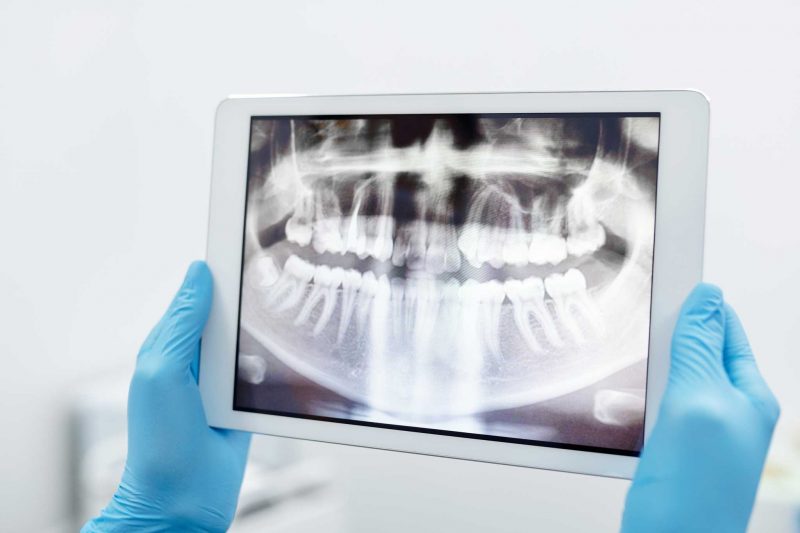Digital Dental X-Rays

Digital Dental X-Rays – Why?
Dental X-rays are one of the most important part of your regular dental treatment. Your dentist uses the specialized imaging technology to look for hidden tooth decay – also called cavities – and can show dental issues such as abscessed teeth and cysts.
Additionally, your dental X-rays allow your dentist to see the condition of prior dental procedures, such as fillings, crowns, root canals, and bridges. And, too, your dentist will be able to look for possible bone loss as a result of periodontal gum disease and find hidden tartar build up.
In addition to diagnostics, your dentist may choose to perform dental X-rays in order to check for bone density as part of preparing you for dental implants, which require an adequate density in order to support the implants.
What are Digital Dental X-Rays?
Like old fashioned dental X-rays, digital dental X-rays are used by your dentist to take images of your mouth, including tooth structure and your jaw bones. In order to take the digital images, your dentist – or a dental technician – will place a small sensor in your mouth, carefully positioned. This small sensor is connected to the processing computer by a very thin wire.
Your dentist or the dental tech inputs the command for the the X-ray machine to send a X-ray through your teeth and into the sensor, effectively taking a photo of your tooth or teeth. The sensor captures the resulting image and sends it through the wire to the computer. Then your dentist will reposition the sensor and take additional digital X-rays until all of your teeth have been X-rayed.
With digital dental X-rays, your dentist or other dental professional is able to immediately see your teeth and jaw bones. This means that assessment and diagnosis is virtually instantaneous.
Digital Dental X-Rays – A Great Advance
Many dentists are now using digital dental X-rays, which have many benefits for you, as the patient. Among some of the many benefits for you, are:- A reduction in the amount of radiation you are exposed to during the X-ray process.
- No need for dental film or processing chemicals in order for your dentist to be able to see the images.
- An almost instantaneous ability to see the X-ray images, which means, if you’re in pain, you’re not waiting for the images to be processed and then viewed.
- Your dentist is able to use color contrast in viewing and manipulating the X-ray image, in order to see all of the details in the image.
